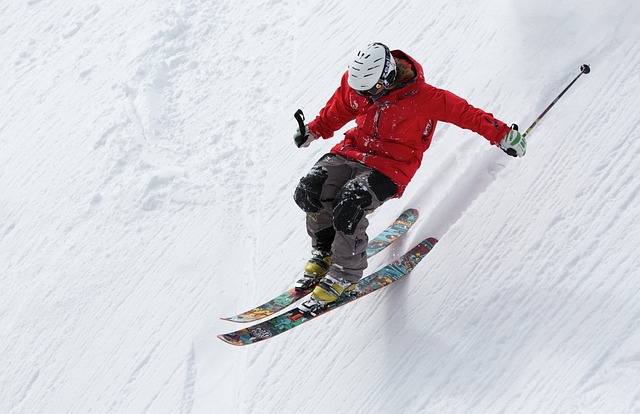Different Types Of Snowboards And Their Uses
Snowboards are made in many forms, each designed for a special way of riding on the snow. Some work best for smooth carving, others for jumps and tricks, and many are built for all-around fun. This article explains the main kinds of snowboards, what sets them apart, and how riders use them in daily practice. You will also learn about beginner boards, freestyle boards, freeride boards, and all-mountain boards, giving you a clear and simple view of why snowboards are an important part of winter activities around the world.

All-Mountain Snowboards
All-mountain snowboards represent the most versatile category in the snowboarding world, designed to perform well across various terrain types and snow conditions. These boards typically feature a directional or directional-twin shape with medium flex, allowing riders to navigate groomed runs, powder, and terrain parks with relative ease. All-mountain boards generally have a slightly set-back stance that provides better float in powder while maintaining decent switch-riding capabilities. The middle-ground design makes them particularly suitable for beginners and intermediate riders who want to explore different aspects of the sport without investing in multiple specialized boards.
Freestyle Snowboards
Freestyle snowboards are specifically engineered for terrain park riding, including jumps, rails, boxes, and halfpipes. These boards typically feature a true twin shape with identical nose and tail designs, allowing for symmetrical performance whether riding regular or switch. Freestyle boards generally have a softer flex pattern that enables easier presses, butters, and more forgiving landings. The centered stance further enhances the board’s symmetrical performance for trick execution. While freestyle boards excel in the park, their specialized design makes them less efficient in deep powder conditions, where the centered stance and twin shape provide less flotation compared to directional boards.
Powder Snowboards
Powder snowboards are specialized for deep snow conditions, featuring distinctive design elements that maximize flotation and maneuverability in powder. These boards typically have a significant setback stance, wider noses, tapered tails, and often incorporate rocker profiles that keep the nose elevated in deep snow. Many powder-specific designs also implement volume-shifted shapes with shorter overall lengths but wider widths to maintain surface area while improving maneuverability in tight tree runs. While powder boards provide an exceptional deep snow experience, they prove less versatile on groomed runs and are not ideal for park riding or switch stance maneuvers.
Freeride Snowboards
Freeride snowboards are designed for advanced riders who primarily explore off-piste terrain, steeps, and natural features. These boards typically feature directional shapes with setback stances and stiffer flex profiles, particularly in the tail, to provide stability at high speeds and in variable conditions. Freeride boards often incorporate camber underfoot for edge hold on steep slopes, with rocker in the nose for improved float in powder. Their construction prioritizes response and precision over playfulness, making them less suitable for freestyle maneuvers but excellent for aggressive riding in challenging terrain. The specialized nature of freeride boards makes them less appropriate for beginners or riders seeking versatility.
Beginner Snowboards
Beginner snowboards are specifically designed to facilitate the learning process for new riders. These boards typically feature softer flex patterns that forgive mistakes and require less physical effort to initiate turns. Many beginner-friendly models incorporate catch-free technologies such as rocker profiles or lifted contact points that reduce the likelihood of catching an edge—a common cause of falls for new snowboarders. While beginner boards prioritize ease of use and forgiveness, they often lack the performance capabilities needed for advanced riding. As skills progress, riders typically transition to more specialized equipment that matches their evolving riding style and terrain preferences.
Snowboard Cost Comparison
When purchasing a snowboard, understanding the price ranges across different categories helps riders make informed decisions based on their budget and needs.
| Snowboard Type | Entry Level Price Range | Mid-Range Price Range | Premium Price Range | Key Features |
|---|---|---|---|---|
| All-Mountain | $300-$400 | $400-$600 | $600-$900+ | Versatile design, medium flex, directional or directional twin shape |
| Freestyle | $350-$450 | $450-$650 | $650-$850+ | True twin shape, softer flex, park-oriented features |
| Powder | $450-$550 | $550-$750 | $750-$1,000+ | Wide nose, tapered tail, setback stance, rocker profile |
| Freeride | $400-$500 | $500-$700 | $700-$950+ | Directional shape, stiffer flex, camber dominant |
| Beginner | $250-$350 | $350-$450 | $450-$550+ | Forgiving flex, catch-free technology, easy turning |
Prices, rates, or cost estimates mentioned in this article are based on the latest available information but may change over time. Independent research is advised before making financial decisions.
Specialty Snowboards
Beyond the main categories, specialty snowboards address niche riding styles and conditions. Split boards divide lengthwise for uphill travel, catering to backcountry enthusiasts who hike to access untracked powder. Volume-shifted boards feature shorter lengths with wider widths, providing the same surface area as longer boards while improving maneuverability. Women-specific models account for typically lighter weights and different body proportions with adjusted flex patterns and narrower widths. Children’s boards incorporate softer flexes and scaled-down dimensions to accommodate developing riders. These specialty categories continue to expand as manufacturers innovate to address specific rider needs and preferences across diverse snowboarding disciplines.
Selecting the right snowboard involves considering your skill level, preferred terrain, riding style, and physical characteristics such as height and weight. While the various snowboard types offer specialized performance in their intended environments, many riders benefit from starting with versatile all-mountain boards that allow exploration of different aspects of the sport before investing in more specialized equipment. As skills and preferences develop, riders often build quivers of multiple boards to optimize their experience across varying snow conditions and terrain types.




